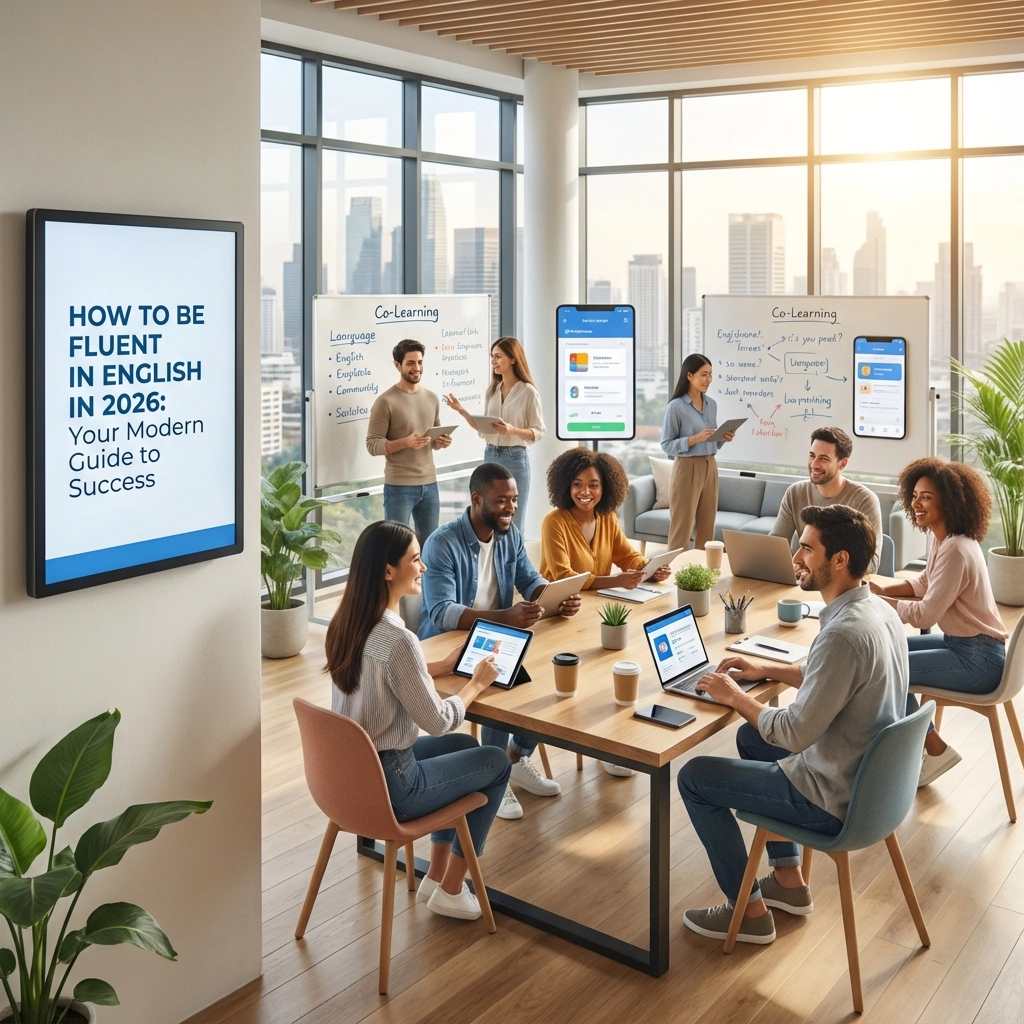Contents
Toggle
Meet Emily Melville, an experienced ESL teacher and writer at Wonderful World English. Emily is a devoted, CELTA-qualified English teacher who dedicates her time to sharing valuable insights into language learning for students and educators.
As an English teacher, I can fully understand my Spanish students’ struggles when getting to grips with the language and its nuances, idiosyncrasies, and many exceptions to the rules.
As a native English speaker, I am ever-so-grateful that it’s my native language and that I don’t have to go through the painstakingly long and arduous journey of obtaining fluency that non-native learners must endure.
But over the years, many of my students have professed to English being way easier than other languages and that they don’t envy foreigners having to learn their native language!
Could this really be true?
Both English and Spanish come with their own set of obstacles for learners to overcome. Determining the most difficult depends on the learner and their native language. English is more difficult than Spanish when it comes to pronunciation and spelling, but Spanish is more tricky regarding verb tenses and grammatical structure.
As a language learner, I can see the struggle from both sides, and I think it depends on which grammatical structures exist in your language and whether or not they exist in the language you’re learning.
The writing system and alphabet also play a massive part.
If a particular structure or way of wording things doesn’t exist in your native language, then it will be difficult for you to get your head around that in a foreign language, let alone learn a whole new writing system.
I am an experienced ESL teacher from England who has taught many Spanish students.
I have also learned Spanish as a second language, so I know first-hand the difficulties and intricacies that come with both of these widely spoken languages.
Today we will look at them in more detail and discuss which is easier to learn.
Let’s jump in!

Spanish: The Tricky Side
Both languages have their difficulties, from pronunciation problems to conjugation complications.
Due to the similarities, native speakers of Romance languages such as Portuguese, Italian, French, and Romanian will have a much easier time learning Spanish than English.
Let’s start by looking at the most common difficulties for English-speaking learners of Spanish:
1. Countless Conjugations and Tenses
The type of verb tenses used in Spanish are not that different from those used in English.
The main problem many English-speaking learners of Spanish have is that each pronoun has its own conjugation in each tense, and there are 18 tenses!
Conjugation in Spanish usually takes a lot of time to learn, particularly as there are many irregular verbs too.
Here’s an example of the verb “comer” (to eat):
I eat à Yo = como
You eat (informal) = à Tú comes
He/she/formal you eat(s) = à Él/ella/usted come
We eat = à Nosotros comemos
You eat (plural, Spain) = à Vosotros coméis
They/you eat (plural) = à Ellos/ellas/ustedes comen
As you can see, there is a lot of variation here, which can be quite a challenge for learners of Spanish!
Superstar singer and dancer Shakira is a native Spanish speaker who learned English.
Click the article below to find out more about her language learning journey!
Related Article: How Did Shakira Learn English? – Answered
2. The Subjunctive Mood
While this grammatical concept does exist in English, it is not nearly as frequently used as in Spanish.
It expresses an imaginary or hypothetical situation as well as expressing demands or wishes.
In English, an example of the subjunctive mood that we often use is in the second conditional clause, “If I were you,” where we would usually use the verb form “was” with the pronoun “I.”
In Spanish, however, the subjunctive is extremely common and used to express desires, suggestions, emotions, uncertainty, and the reasons listed above.
There are three main subjunctive tenses – the present, imperfect, and future, although the future is rarely used and only really seen in formal language.
I’ve been learning Spanish for over eight years and am sometimes puzzled by the subjunctive!

3. Directness
As English speakers, we tend to be very polite, and it’s incredibly common to use hedging in our speech and writing in order to soften our words and come across as less direct.
Albeit slightly exaggerated, an example is a sentence such as:
“Would you mind turning the music down a bit, if it’s not too much trouble?”
Instead of directly using the imperative “turn the music down please,” we are more inclined to use tentative language, such as modal verbs and conditionals, to make what we say seem less direct.
In Spanish, language is way more direct, and although politeness can be portrayed in many ways, it’s often not considered rude to use direct imperatives such as “dame” (give me).
In a bar or café, you might say or hear, “Ponme un café con leche” (can I have a latte?) Using “por favor” (please) can be attached to the end of these phrases for politeness, but everything depends on your tone.
English-speaking Spanish learners often find it hard to let old habits die hard as they translate “Can I have…” to “puedo tener…” to avoid what we perceive as rude and direct interaction.
4. Varieties of Spanish
One of the age-old questions of Spanish learners is, “Which variety of Spanish should I learn?”
The Spanish language varies hugely between countries and even within countries too, and often learners want to focus on one particular variety of the language.
In doing so, they inevitably come across words or specific ways of pronouncing words not used in the variety of Spanish they have chosen to study, which can cause a lot of confusion.
For instance, the word for popcorn famously translates to many different words in Spanish, depending on the country. In Spain and Mexico, it’s “palomitas”.
In Colombia, “crispetas” or “maíz pira”.
In Paraguay “pororó”.
In Argentina, “pochoclo”.
And that’s just a few examples!
As well as that, the pronouns used vary among Spanish-speaking countries, most notably in Spain, where the pronoun “vosotros” is used as the plural form of “you,” whereas “ustedes” is the Latin American equivalent.
Such variety often frazzles our minds and leaves us unsure of which words, tenses, or pronunciation to use.
Mexico has over 120 million Spanish speakers, with many learning English as a second language.
If you’re interested in new opportunities and want to know what it takes to teach ESL in Mexico, check out the guide below!
Related Article: How to Teach English in Mexico – All You Need to Know (2023)

English: The Tricky Side
While I could talk about Spanish’s difficulties for English-speaking learners, it’s time to switch over and look at things from the other side!
Natives of Germanic languages, like Germans, Dutch, Danes, and Icelandics, will learn English more easily than Spanish.
Let’s look at some of the most difficult aspects of English for Spanish speakers:
1. Spelling and Pronunciation Inconsistencies
It’s no secret that English spelling is a bit of a head-scratcher at times!
Many words have unusual spellings, and their pronunciation doesn’t seem to match how they are actually pronounced.
And we have many homophones, words that are spelled differently but pronounced the same, like “right” and “write,” for example.
This can be particularly challenging for Spanish-speaking students, whose language is one where the pronunciation is consistent, and the same combination of letters will always produce the same sound.
Therefore, in Spanish, if you know the pronunciation of letters and their combinations, you can pronounce a word perfectly just by looking at it, regardless of whether you know the word or not.
However, in English, despite the existence of many pronunciation rules, it is more difficult when the same letters often make various sounds.
2. Phrasal Verbs
Phrasal verbs are often the bane of poor English learners’ existence!
Phrasal verbs are structures made up of a verb and a particle, which is always a preposition, for example, “get up” or “sit down.”
Some phrasal verbs can have two prepositions, like “come up with” or “get along with.”
The difficulty of mastering phrasal verbs is that there are thousands of them in the English language, and more often than not, their meaning is very different from the meaning of the verb when it stands alone.
For example, the verb “get” has a multitude of meanings, from obtain to understand to buy, but the phrasal verb “get along with someone” means to have a good relationship with them – nothing to do with the original meanings of “get”!
The sheer number of phrasal verbs and the vast difference in meaning from the original verbs result in utter confusion and despair for many learners, not only those from the Spanish-speaking sphere.

3. Pronoun Issues
Spanish speakers often struggle with the differentiation of he/she and /his/her, often leading to confusing sentences where the listener can end up feeling confused about who the speaker is talking about.
As well as this confusion, because each pronoun has a conjugation in Spanish, it’s often unnecessary to state the pronoun, which is commonly omitted from the sentence.
For instance, I could say “Voy a comer una pizza esta noche” (I’m going to eat a pizza tonight) instead of “Yo voy a comer una pizza esta noche” because the conjugation “voy” of the verb “ir” (to go) only corresponds to the pronoun “yo” (I), so there is no need to say it, as it is already understood through the verb.
No such concept exists in English, so this often results in Spanish speakers leaving out the pronoun in sentences, which is incorrect and sounds strange to a native English speaker.
4. Understanding Native Speakers
Although this is a universal difficulty for those of us who learn and practice foreign languages, in my experience, it is where my Spanish-speaking students struggle the most, aside from pronunciation.
Over the past nine years, I have taught so many Spanish-speaking students, and I know their strengths and weaknesses like the back of my hand, and most of the students I’ve taught find listening extremely difficult.
Many feel lost while trying to keep up with natives in a conversation.
The fact is that the audio clips and videos played in class are usually materials specifically made for learners, lacking in authenticity.
In other words, we don’t speak like that in everyday life!
And despite the Spanish-speaking world often being guilty of the same thing, it’s true that we “eat” some of our words and phrases, making features like connected speech hard for students to pick up on.
Check out the link below for some more information on the difficulties of learning English.
Related Article: Is the English Language Hard to Learn? – Answered

Conclusion
When you look at the features of both languages, it’s clear to see that both have some tricky areas to master and when comparing languages in general, whether it’s difficult or not depends on a considerable number of factors, as discussed above.
Not only does your native language and its similarities to your target language come into play, but also your motivation for learning the language, your skills, your style of studying, and of course, your personality.
For that reason, I don’t think I can say that one language is harder than the other, but English is the most difficult in terms of pronunciation and spelling.
Still, when it comes to verb tenses and grammatical structures, Spanish takes the crown for the most difficult.
Either way, both languages are full of wonder, and speaking either is a wonderful experience and can open doors to many great opportunities.
I hope this has helped you better understand the difficulties of English and Spanish.
Have a great day!
Image Attribution: All images licensed via canva.com





